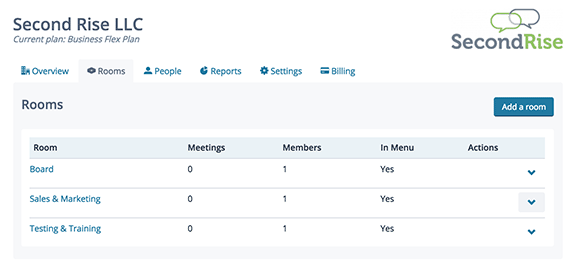Have you noticed the icon we use to represent a meeting room in Lucid Meetings?
It shows four sturdy, windowless walls. A bit bleak, perhaps, but private.
That’s how meeting rooms work. Each one is a private place where only the people inside the room can see the goings on.
Meeting rooms keep conversations private to the people in the room.
The icon also kind of looks like a box. Meeting rooms act like a box, creating a safe place to store all of that group’s meeting records, documents, action items, and reports.
Meeting rooms organize and store content.
When do I need a new meeting room?
The answer is:
Add a room any time you need a new private space for meetings, or want a way to organize a new series of meetings.
With most subscriptions, you can create as many meeting rooms as you need. We create separate rooms for:
- New projects
This is especially important if you use Basecamp, as you’ll match your meeting rooms to your Basecamp projects. - Each department (product development, sales & marketing, etc.)
- Each team member, so everyone has a way to run meetings if they need it
- The board
- All-hands staff meetings
- Testing and training: a place where you can experiment with new Lucid features without interfering with any of your other meeting records
Our non-profit customers also create a separate meeting room for each committee and subcommittee in the organization. Customer success and sales teams create a room for working with each client.
Finally, the room icon has an open top. Again, so very appropriate! It’s important to know that organization owners and administrators can look into all the meeting rooms in the organization - peering in from above to see what’s going on.
Organization owners and admins can see into all the meeting rooms.
Adding New Rooms
Organization owners and administrators can add new rooms on the organization Rooms tab.

There is no limit on the rooms you can add in an organization
Learn more about setting up each room.
